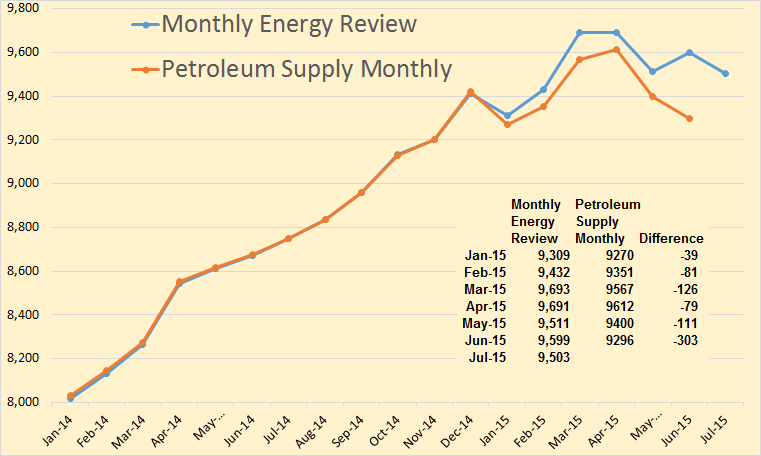Hi all,
As an experiment two open threads were created. Oil and Natural Gas and Non-oil (all other energy related stuff such as solar, wind, EVs, etc).
This is the oil and natural gas thread.
Please put your comments in the appropriate thread.
Hi all,
As an experiment two open threads were created. Oil and Natural Gas and Non-oil (all other energy related stuff such as solar, wind, EVs, etc).
This is the oil and natural gas thread.
Please put your comments in the appropriate thread.
Hi all,
As an experiment I am creating two open threads. An oil and natural gas thread (coal could be here as well) and a non-oil thread for other energy and non-energy related discussions.
This thread is the non-oil discussion so you can put, renewable energy, EV, philosophy , evolutionary psychology, etc in this thread.
Thanks.
EIA begins monthly survey-based reporting of U.S. crude oil production
With the release of today’s Petroleum Supply Monthly, EIA is incorporating the first survey-based reporting of monthly U.S. crude oil production statistics. Today’s Petroleum Supply Monthly includes estimates for June 2015 crude oil production using new survey data for 13 states and the federal Gulf of Mexico, and revises figures previously reported for January through May 2015.
From the EIA’s Monthly Crude Oil and Natural Gas Production webpage.
Beginning with the June 2015 data, EIA is providing estimates for crude oil production (including lease condensate) based on data from the EIA-914 survey. Survey-based monthly production estimates starting with January 2015 are provided for Arkansas, California, Colorado, Kansas, Louisiana, Montana, New Mexico, North Dakota, Ohio, Pennsylvania, Texas, Utah, Wyoming, and the Federal Gulf of Mexico. For two states covered by the EIA-914—Oklahoma and West Virginia—and all remaining oil-producing states and areas not individually covered by the EIA-914, production estimates are based on the previous methodology (using lagged state data). When EIA completes its validation of Oklahoma and West Virginia data, estimates for these states will also be based on EIA-914 data. For all states and areas, production data prior to 2015 are estimates published in the Petroleum Supply Monthly. Later in 2015, EIA will report monthly crude oil production by API gravity category for the individually-surveyed EIA-914 states.
This is great news for those of us who have been complaining for years about the EIA’s poor and misleading data collection methods.
June C+C production, according to the Monthly Energy Review, was almost 9.6 million barrels per day. But the Petroleum Supply Monthly cuts that by 303,000 bpd. And they have production dropping by 316,000 barrels per day in the last two months, May and June.
The EIA’s Monthly Energy Review came out a couple of days ago. The data is in thousand barrels per day and the last data point is July 2015.
US consumption of total liquids, or as the EIA calls it, petroleum products supplied, reached 20,000,000 barrels per day for the first time since February of 2008.
Something I never noticed before, consumption started to drop in January 2008, seven months before the price, along with world production, started to drop in August 2008. This had to be a price driven decline. Could the current June and July increase in consumption be price driven also?
Jean Laherrere sent me the below charts the other day. I had planned on posting them with more Bakken data. But my schedule has been busy so I am posting them alone.
The Hubbert Linearization puts the Bakken about half way to the end.